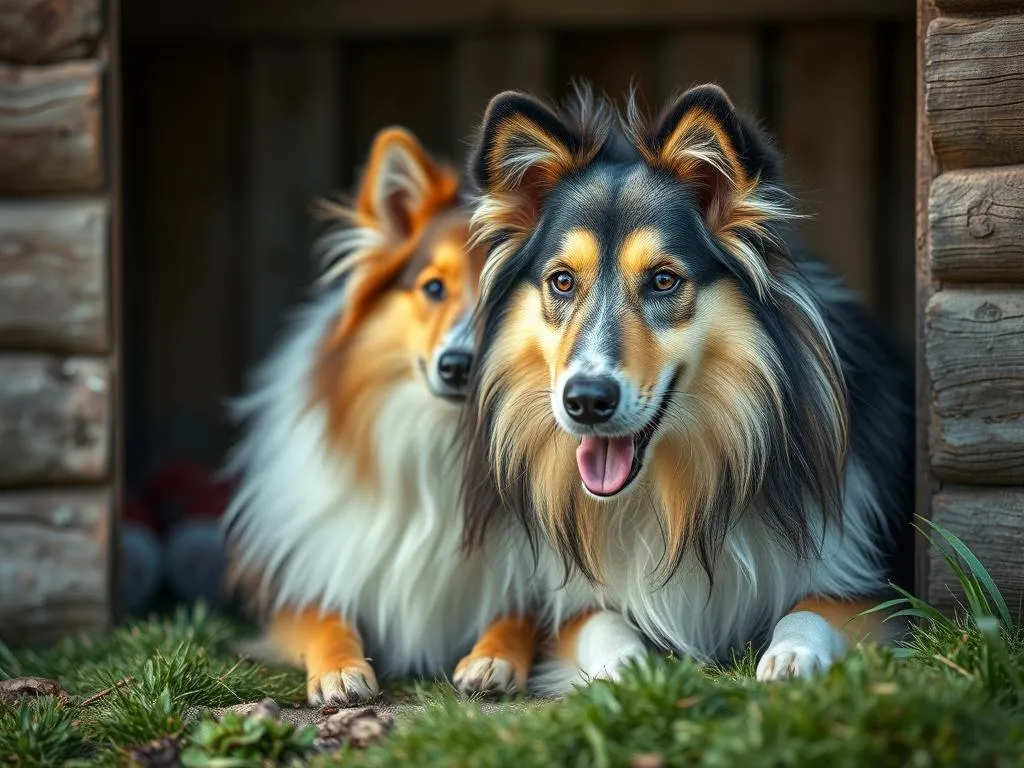
Understanding dog breeds is crucial for prospective dog owners, as each breed comes with its unique characteristics, needs, and behaviors. Among the many breeds, the Shetland Sheepdog stands out for its intelligence and loyalty. One question that often arises when considering this breed is, do Shetland Sheepdogs shed? This article will delve into the shedding habits of Shetland Sheepdogs, providing a comprehensive overview of the breed, its grooming needs, and how shedding can impact potential owners.
Understanding Dog Breeds
What is a Dog Breed?
A dog breed is a specific group within the domestic dog species (Canis lupus familiaris) that has been selectively bred for particular traits, including size, temperament, and physical characteristics. Each breed exhibits a set of predictable traits that can influence its behavior, care requirements, and compatibility with various lifestyles. Understanding these characteristics is vital for making informed decisions about pet ownership.
The Role of Genetics in Shedding
Genetics play a significant role in determining a dog’s coat type, which directly affects shedding. Dogs typically have either a single coat or a double coat. A single coat consists of one layer of fur, while a double coat has an undercoat and an outer coat. The type of coat influences how much a dog sheds and when.
For example, breeds with double coats, like the Shetland Sheepdog, tend to shed more than those with single coats, especially during seasonal changes.
Shetland Sheepdogs: An Overview
History and Origin
The Shetland Sheepdog, also known as the Sheltie, hails from the Shetland Islands of Scotland. Originally bred for herding sheep, these dogs were valued for their intelligence and agility. Their gentle nature has made them popular as companion animals, in addition to their herding capabilities.
Physical Characteristics
Shetland Sheepdogs are medium-sized dogs, typically weighing between 20 and 40 pounds and standing about 13 to 16 inches tall at the shoulder. They possess a thick, double coat that can come in a variety of colors, including sable, black, and blue merle. Their striking appearance and expressive eyes make them a favorite among dog lovers.
Temperament and Behavior
Shetland Sheepdogs are known for their friendly and affectionate temperament. They are highly intelligent and eager to please, which makes them excellent learners. Their herding background gives them a strong instinct to protect their family, making them suitable as both family pets and working dogs. However, their intelligence also means they require regular mental stimulation and exercise to prevent boredom.
Shedding in Shetland Sheepdogs
Do Shetland Sheepdogs Shed?
To answer the question directly: do Shetland Sheepdogs shed? Yes, they do shed. In fact, Shetland Sheepdogs are known to shed moderately to heavily, especially during seasonal changes when they “blow” their coats. This shedding can occur twice a year as they transition between their winter and summer coats. Therefore, regular grooming is essential for managing shedding and keeping the coat healthy.
Factors Affecting Shedding
Several factors can influence the shedding patterns of Shetland Sheepdogs:
- Age and Health: Younger dogs may shed less than older dogs, while health issues can also affect shedding.
- Environmental Factors: Climate plays a role; dogs living in warmer climates may shed more consistently throughout the year.
- Diet and Nutrition: A balanced diet rich in omega fatty acids can improve coat health and potentially reduce excessive shedding.
Grooming and Maintenance
Grooming Needs of Shetland Sheepdogs
To keep a Shetland Sheepdog looking its best, regular grooming is necessary. It’s recommended to brush their coat at least 2-3 times a week, and more frequently during shedding seasons. This helps remove loose hair and prevents matting.
Essential grooming tools include:
- Slicker Brush: For removing loose hair and tangles.
- Undercoat Rake: To help manage the dense undercoat.
- Comb: For finishing touches and detangling.
Managing Shedding
Minimizing shedding in Shetland Sheepdogs involves regular grooming and a few additional tips:
- Daily Brushing: During shedding seasons, daily brushing can significantly reduce the amount of hair around your home.
- Proper Nutrition: Ensure your dog receives a balanced diet that supports a healthy coat.
- Hydration: Adequate water intake is essential for overall health and coat condition.
Bathing and Coat Care
Bathing a Shetland Sheepdog should be done as needed, typically every 6-8 weeks or when they become particularly dirty. Over-bathing can strip the coat of its natural oils, leading to dryness.
When bathing, use a gentle dog shampoo specifically formulated for their coat type. Rinse thoroughly to avoid any residue that could irritate their skin.
Allergies and Shedding
Shedding and Allergies
Many potential dog owners are concerned about allergies related to dog shedding. It’s important to understand that while shedding can contribute to allergy symptoms, it’s not just the hair itself that causes reactions. Proteins found in a dog’s saliva, urine, and skin can also trigger allergies.
There are common myths about Shetland Sheepdogs and allergies, including the misconception that they are hypoallergenic. While they may shed less than some breeds, they are not considered hypoallergenic.
Hypoallergenic Alternatives
For allergy sufferers, considering hypoallergenic dog breeds may be beneficial. Breeds such as Poodles, Bichon Frises, and some terriers might be better suited for those with allergies. When looking at a Shetland Sheepdog, it’s essential to manage expectations and consult with an allergist to determine the best approach for your situation.
Conclusion
In summary, understanding the shedding habits of Shetland Sheepdogs is crucial for anyone considering bringing one into their home. These dogs are known for their moderate to heavy shedding, especially during seasonal changes. Regular grooming, a balanced diet, and attention to their health can help manage shedding effectively.
Owning a Shetland Sheepdog can be a rewarding experience, given their affectionate nature and intelligence. However, prospective owners should consider all factors, including shedding, temperament, and care requirements, before making a decision.
Frequently Asked Questions (FAQs)
Common Questions about Shetland Sheepdogs
Do Shetland Sheepdogs bark a lot?
Shetland Sheepdogs are known to be vocal. They bark to alert their owners of potential intruders or when they want attention.
How much exercise do Shetland Sheepdogs need?
They require regular exercise, ideally 1-2 hours a day, including walks and playtime. Their intelligence also means they enjoy mental challenges.
What health concerns should owners be aware of?
Shetland Sheepdogs can be prone to certain health issues, including hip dysplasia, eye problems, and skin allergies. Regular veterinary check-ups are essential.
General Shedding Questions
Are there breeds that shed less than Shetland Sheepdogs?
Yes, breeds such as Poodles or Bichon Frises generally shed less and may be more suitable for allergy sufferers.
How can I tell if my dog is shedding excessively?
Excessive shedding can be identified if you notice bald patches, excessive hair loss during brushing, or changes in coat texture. If you’re concerned, consult with a veterinarian.
With the right care and understanding, a Shetland Sheepdog can be a delightful addition to any family, providing loyalty and companionship while requiring attention to grooming and shedding management.









